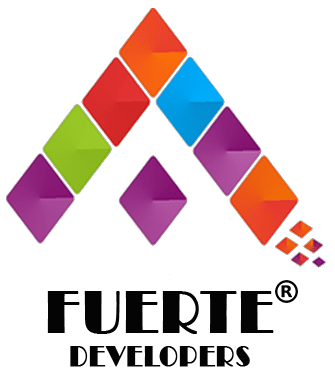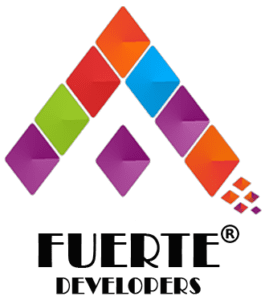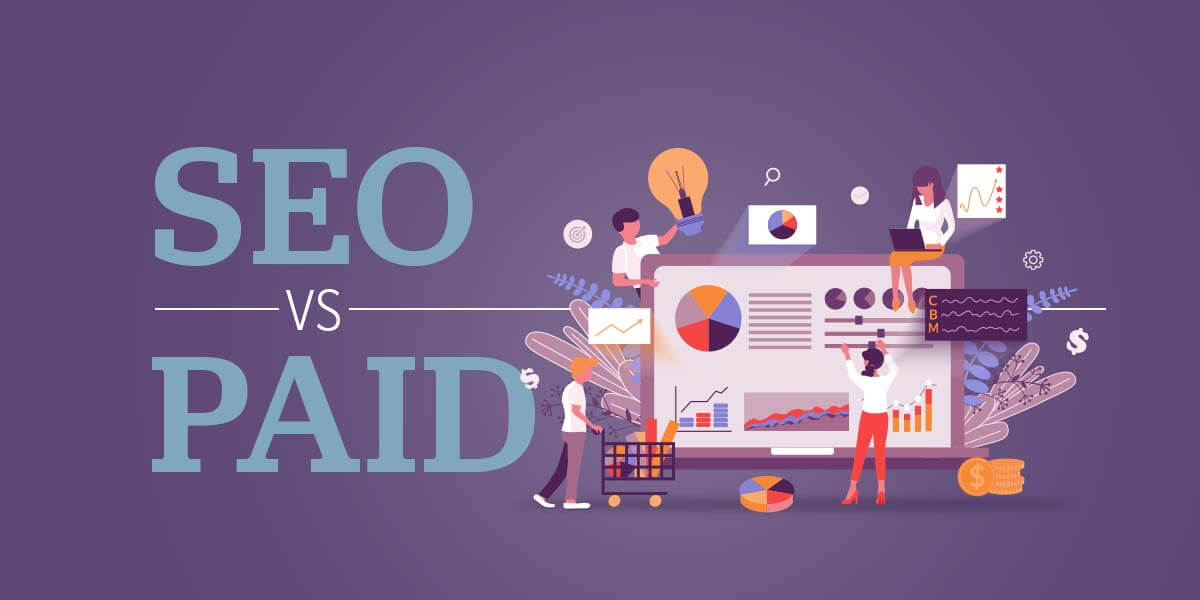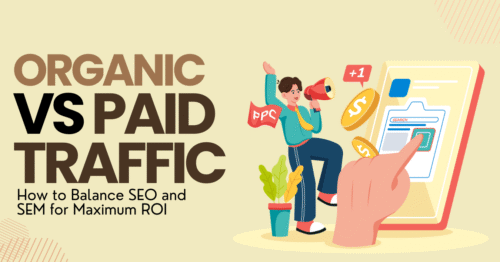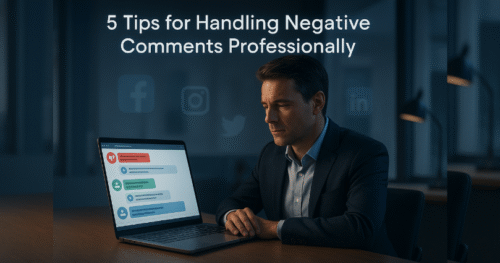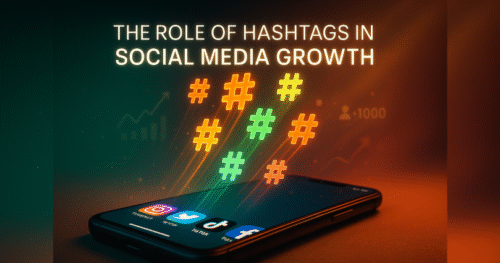Every modern business faces a critical question — SEO or Paid Ads: which delivers the best return on investment (ROI)? Both can drive traffic and conversions, but their results, costs, and timeframes differ drastically. Let’s explore which one truly benefits your business most and how you can use both to maximize ROI.
What Is SEO?
Search Engine Optimization (SEO) is the practice of improving a website’s visibility in organic search results. It focuses on making your site relevant, fast, and valuable to users so that search engines rank it higher.
SEO includes four key areas:
- On-Page SEO: Keyword use, meta tags, titles, and internal links.
- Off-Page SEO: Backlink building and brand mentions.
- Technical SEO: Speed, mobile responsiveness, and site structure.
- Content SEO: Writing informative, keyword-rich blogs and pages.
The best part? SEO generates long-term, free traffic once your site ranks. You don’t pay per click — your investment goes into strategy, not ongoing spend.
What Are Paid Ads?
Paid Advertising (PPC or SEM) involves paying platforms like Google or Meta to display your ads at the top of search or social results. You pay each time someone clicks.
Main benefits include:
- Instant visibility: Appear at the top within hours.
- Precise targeting: Choose demographics, location, and behavior.
- Controlled spend: You set the budget and duration.
- Easy tracking: Measure performance and conversions instantly.
Paid ads deliver immediate exposure but vanish when you stop funding them.
SEO vs Paid Ads: ROI Comparison
Factor | SEO | Paid Ads |
Cost | One-time investment | Ongoing cost per click |
Timeframe | 3–6 months for results | Instant visibility |
Longevity | Long-term | Ends when spending stops |
ROI Timeline | Compounding returns | Short-term gains |
Trust Level | High (organic credibility) | Medium (sponsored content) |
Scalability | Gradual | Budget-based |
Best Use | Long-term authority | Quick conversions |
Both deliver ROI — SEO builds a foundation for years, while paid ads give immediate but temporary results.
When SEO Wins
- For long-term sustainability: Once you rank, you receive ongoing traffic with little extra cost.
- For brand credibility: Users trust organic listings more than ads.
- For lower cost per acquisition: Your cost per lead decreases over time.
- For evergreen content: SEO keeps delivering leads months after publishing.
- For consistent visibility: Rankings don’t vanish overnight.
Example:
A café ranking for “best breakfast in Rajkot” can receive hundreds of free visits every week without ad spend.
When Paid Ads Win
- For immediate results: Perfect for launches, sales, and time-sensitive campaigns.
- For high-intent targeting: Focus on ready-to-buy audiences.
- For precise control: Adjust budgets, audiences, and creatives anytime.
- For measurable ROI: View impressions, clicks, and conversions in real time.
- For A/B testing: Test keywords, visuals, and messages quickly.
Example:
A fashion brand running a “Diwali Sale” can drive instant purchases within hours using targeted Google or Instagram ads.
Why SEO Offers Stronger Long-Term ROI
- Compounding Value: Every optimized page continues bringing traffic.
- Sustainability: Once built, rankings hold value without daily spending.
- Trust Factor: 70% of users skip ads and click organic results.
- Reduced Cost: Over time, SEO costs less per customer than PPC.
- Brand Authority: Consistent organic visibility builds long-term recognition.
SEO is like owning your audience. Paid Ads are like renting it.
Why Paid Ads Offer Faster Short-Term ROI
- Immediate Reach: You can appear before thousands of potential customers instantly.
- Conversion Focused: Paid Ads target people ready to act.
- Easy Analytics: Real-time tracking simplifies ROI calculation.
- Scalable: Increase budget to reach more people instantly.
- Multi-Platform Power: Google, Facebook, Instagram, and YouTube deliver exposure across channels.
Paid Ads are ideal for short-term boosts and rapid lead generation, especially when launching new products or services.
Combining SEO and Paid Ads for Maximum ROI
The smartest marketers use both. Here’s how they work together:
- Data Integration: Use Paid Ad data to discover top-performing keywords for SEO content.
- Dual Visibility: Appear in both organic and paid results — boosting credibility.
- Retargeting: Use Paid Ads to re-engage users from organic traffic.
- Budget Efficiency: Let SEO handle long-term visibility, while ads drive quick wins.
- Quality Score Boost: SEO-optimized landing pages lower your ad cost per click.
Result: A balanced strategy that delivers immediate results and lasting success.
Practical Examples
1. Local Business
A dentist in Gujarat uses SEO to rank for “best dental clinic near me” while running PPC ads for “emergency dental service” — maximizing leads from both.
2. E-Commerce
A jewelry brand ranks organically for “Tanzanite rings” but uses Paid Ads to promote limited-time discounts. Both channels drive conversions efficiently.
3. SaaS Company
A software startup invests in blog-based SEO for education and runs retargeting ads for trial sign-ups, blending awareness and conversion strategies perfectly.
Common Myths About SEO and Paid Ads
- “SEO is free.”
It costs time, content, and technical expertise — but not per click. - “Paid Ads guarantee profit.”
Without optimization, ads can lose money fast. - “You must pick one.”
The best results come from using both strategically. - “SEO takes forever.”
With proper planning, results appear in 3–4 months. - “Ads don’t impact SEO.”
Ads can increase brand searches, indirectly boosting organic traffic.
Which Should You Choose?
- Choose SEO if you want long-term traffic, authority, and trust.
- Choose Paid Ads if you need instant leads and measurable results.
- Combine both for a balanced, scalable strategy.
A smart ratio for most businesses is 60% SEO and 40% Paid Ads, adjusting as performance data grows.
Final Verdict
The SEO vs Paid Ads debate isn’t about picking one side — it’s about using each at the right time.
- SEO builds credibility, brand presence, and lasting ROI.
- Paid Ads provide speed, control, and data-driven precision.
Together, they form a perfect marketing ecosystem: SEO fuels long-term growth, while Paid Ads accelerate momentum.
